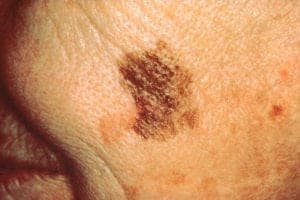You can slip into the tanning bed for a few dollars, but achieving that tawny glow doesn’t come without other costs — including a heightened risk of skin cancer and massive costs to the health care system.
All told, a rise in skin cancer rates associated with artificial tanning racked up more than $343 million in 2015, according to new research published in the Journal of Cancer Policy.

In that year alone, more than 263,000 cases of skin cancer occurred as a result of indoor tanning, and lifetime costs associated with such cases of skin cancer easily reach into the billions — about $127 billion in lifetime costs for the cases identified in 2015.
“Skin cancer is the most common cancer in the US and its incidence is increasing, due in part to the increase in the use of tanning devices,” said lead author Dr. Hugh Waters at the University of North Carolina.
Related: ‘Automated Dermatologist’ May Detect Skin Cancer With Same Accuracy as Real Doctors
“We know these devices have significant health and financial impacts, and with this study we wanted to establish these impacts clearly to support efforts to reduce their use, especially among younger people,” added Dr. Waters.

Tanning devices emit two types of UV radiation — UV-A, which damages cells, and UV-B, which causes skin burning. Both types of UV radiation can increase the risk of skin cancer, according to the researchers.
Cancer Estimates May Be Conservative
The researchers performed a statistical analysis to figure out how three types of skin cancer — cutaneous melanoma, basal cell carcinoma and squamous cell carcinoma — could be attributed to tanning devices.
Assessing past data on tanning device use and the relative risk of acquiring skin cancer, the team found that tanning beds are linked to about 9,000 cases of melanoma, by far the deadliest form of skin cancer, about 87,000 cases of squamous cell carcinoma and 168,000 cases of basal cell carcinoma.
Previous research has also found that more indoor tanning is tied to rapidly climbing rates of melanoma, which is projected to spike to more than 87,000 cases in 2017.
A total of about five million cases of squamous cell carcinoma and basal cell carcinoma occur every year. The authors also report that their estimates may be significantly lower than what’s actually happening.

“Our calculations are all conservative, so this is the lower end of the estimate — the impact could be even higher than this,” said Dr. Waters.
To estimate the impact of lifetime costs for patients identified with tanning bed-associated skin cancer in 2015, the researchers added up medical costs, years of life lost and lost earnings due to disease. Considering those factors, they arrived at the total productivity losses of more than $125 billion.
Ultimately, the researchers call for greater awareness of the potential harms of artificial tanning.
“Tanning devices cause hundreds of thousands of people to suffer a number of different diseases, costing billions of dollars and, most importantly, people’s lives. We hope that our results will help in the efforts toward reducing the use of tanning devices,” said Dr. Waters.
Related: Melanoma Drug Halts Spread of Cancer Cells by 90 Percent in Trials
Richard Scott is a health care reporter focusing on health policy and public health. Richard keeps tabs on national health trends from his Philadelphia location and is an active member of the Association of Health Care Journalists.


![How To: ‘Fix’ Crepey Skin [Watch]](https://cdn.vitalupdates.com/wp-content/uploads/2017/05/bhmdad.png)












